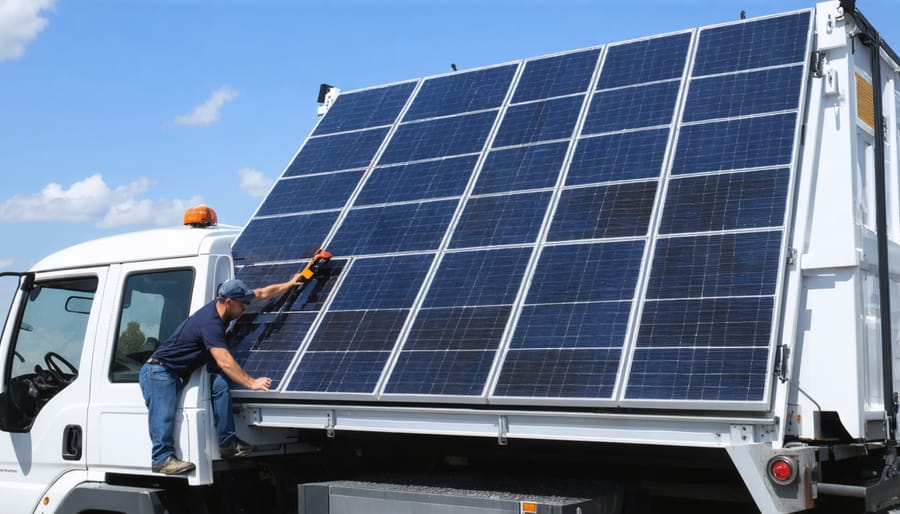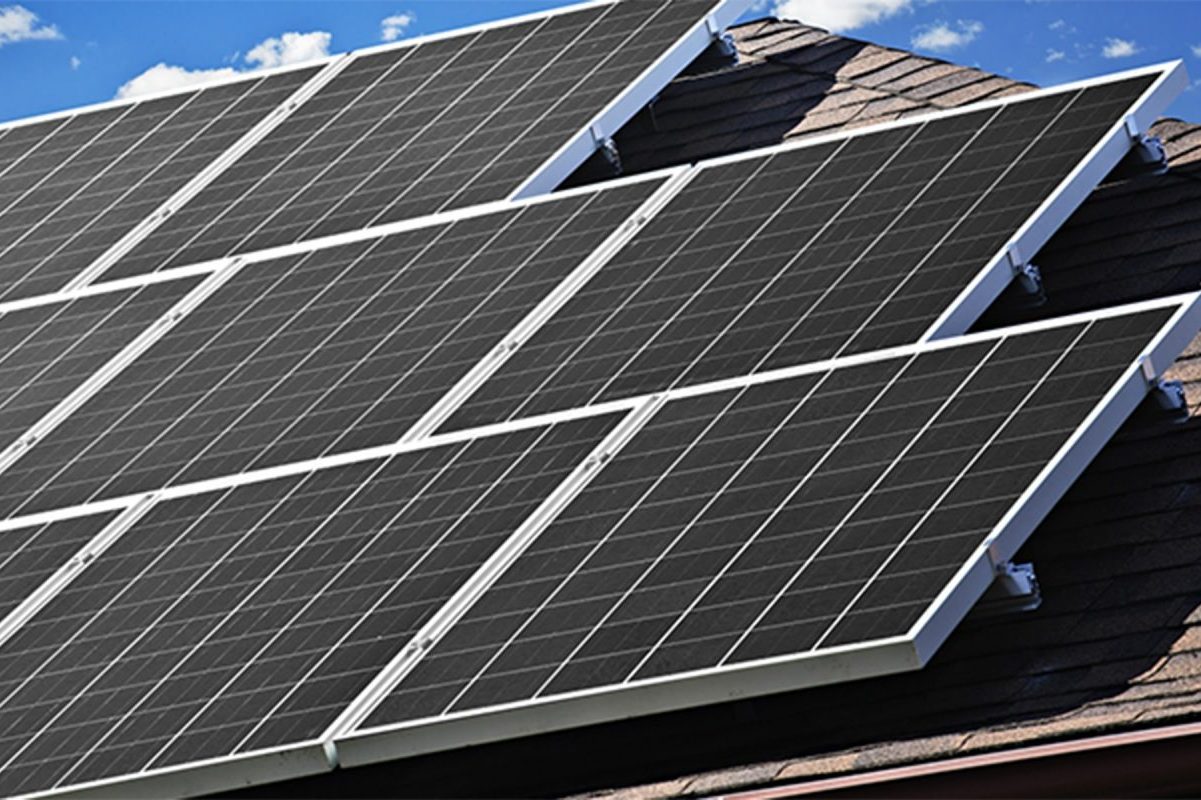As solar energy gains popularity in the USA, the question of what happens to panels at the end of their lifespan becomes increasingly pressing. Solar panel recycling is a critical aspect of sustainable energy management that is often overlooked, despite its potential to reduce waste, conserve resources, and minimize the hidden cost of solar panels. In this article, we will explore the current state of solar panel recycling in the USA, its importance for the environment and economy, and the challenges and opportunities that lie ahead in this emerging industry. By shedding light on this crucial topic, we aim to inspire a more sustainable future for solar energy.
Why Solar Panel Recycling Matters
Conserving Valuable Materials
Recycling solar panels not only reduces waste but also conserves valuable materials that can be reused in manufacturing new products. The recycling process allows for the recovery of silicon, glass, and various metals that are essential components of solar panels. By extracting these materials, recyclers can minimize the need for mining and processing raw resources, which has significant environmental benefits.
The silicon wafers used in solar cells can be reclaimed and repurposed for new solar panels or other electronic devices. Similarly, the glass and aluminum frames can be melted down and used again in construction or manufacturing. Precious metals like silver, copper, and lead are also retrieved during the recycling process, further reducing the demand for virgin materials.
By conserving these valuable resources, solar panel recycling contributes to a more sustainable and circular economy. It lessens our dependence on finite raw materials and decreases the energy consumption associated with mining and processing. As the solar industry continues to grow, recycling will play an increasingly crucial role in managing the end-of-life solar panels and ensuring that the materials used in their production are responsibly recovered and reused.
Reducing Environmental Impact
Recycling solar panels significantly reduces environmental impact by minimizing waste, emissions, and the need for new raw materials. When solar panels reach the end of their lifespan, recycling ensures that valuable materials like silicon, glass, and metals can be recovered and reused instead of ending up in landfills. This circular approach conserves resources and decreases the demand for mining, which often has detrimental effects on ecosystems and local communities. Moreover, recycling solar panels helps lower the carbon footprint associated with manufacturing new panels, as it requires less energy compared to producing them from scratch. By embracing solar panel recycling, we can further enhance solar power’s environmental impact and ensure a more sustainable future. As the solar industry continues to grow in the USA, establishing efficient recycling processes and infrastructure will be crucial in minimizing waste and maximizing the green benefits of this clean energy technology. By supporting and participating in solar panel recycling initiatives, individuals and businesses can contribute to a cleaner environment while also promoting responsible resource management.
The Solar Panel Recycling Process
Collection and Transportation
Once solar panels reach the end of their lifespan, specialized recycling companies collect them from homes and solar farms. These companies often partner with solar installers and manufacturers to streamline the recycling process. When it’s time for recycling, the panels are carefully removed and transported to dedicated recycling facilities.
The collection process involves safely dismantling the solar arrays, ensuring the panels remain intact for efficient recycling. Trained technicians handle this task to minimize damage and potential hazards. They also sort the panels based on their type and manufacturer, as this information is crucial for the recycling process.
Proper handling during transportation is essential to prevent breakage and maintain the panels’ integrity. The collected panels are securely packaged and loaded onto trucks designed for transporting delicate materials. These trucks then deliver the panels to recycling facilities capable of processing them efficiently and extracting valuable components.
As the solar industry continues to grow in the United States, establishing a robust collection and transportation infrastructure is crucial. Efficient logistics ensure that retired solar panels are recycled promptly, minimizing environmental impact and supporting the sustainable growth of renewable energy. With responsible collection and transportation practices, the solar industry can close the loop on panel lifecycles and contribute to a greener future.
Disassembly and Separation
The disassembly and separation of solar panels is a crucial step in the recycling process. Trained technicians carefully dismantle the panels, removing the aluminum frame, junction box, and wiring. The glass and silicon cells are then separated, typically using a combination of mechanical and thermal techniques. Specialized equipment, such as industrial shredders and separators, is employed to break down the panels into smaller components. The glass is often crushed and purified for reuse in new solar panels or other glass products. The silicon cells are heated to high temperatures, allowing the silicon to be recovered for use in new photovoltaic cells. Other materials, like copper and silver, are also extracted and recycled. Throughout the process, safety precautions are taken to handle any toxic substances responsibly. By meticulously separating the various components, recyclers can maximize the recovery of valuable materials, reducing waste and minimizing the environmental impact of discarded solar panels. As the demand for solar energy grows, efficient disassembly and separation techniques will play an increasingly important role in creating a sustainable and circular economy within the solar industry.
Material Recovery and Purification
The recycling process for solar panels involves several stages to recover valuable materials. First, the panels are dismantled and the various components are separated, including the glass, metal frame, junction box, and solar cells. The glass and aluminum frames are easily recycled through traditional methods.
The solar cells, which contain the majority of the valuable materials, undergo a more complex process. They are typically shredded and then subjected to chemical treatments to extract materials like silicon, silver, copper, and other rare metals. These treatments often involve using acids or high-temperature furnaces to purify the materials.
Innovative recycling methods are being developed to improve the efficiency and environmental friendliness of the process. For example, some companies are using waterjet technology to separate the materials without the need for harsh chemicals. Others are exploring the use of robots and artificial intelligence to automate and optimize the recycling process.
As solar panel recycling becomes more widespread, there is a growing focus on developing closed-loop systems where the recovered materials can be directly used in the production of new solar panels. This approach helps to conserve resources, reduce waste, and minimize the environmental impact of solar energy.
Challenges and Opportunities in USA Solar Recycling
Developing Recycling Infrastructure
As the solar industry continues to grow in the United States, the need for advanced recycling facilities and processes becomes increasingly apparent. While some recycling infrastructure exists, it is not yet sufficient to handle the expected influx of decommissioned solar panels in the coming years. Developing a robust recycling network is crucial for minimizing waste, recovering valuable materials, and ensuring the long-term sustainability of the solar industry.
Investing in state-of-the-art recycling technologies and facilities can help streamline the process, making it more efficient and cost-effective. By implementing innovative solutions, such as automated dismantling and sorting systems, recycling centers can process a higher volume of panels while maintaining high recovery rates for materials like glass, aluminum, and silicon.
Moreover, establishing a network of strategically located recycling facilities across the country would reduce transportation costs and carbon emissions associated with shipping old panels to distant processing sites. This localized approach would also create job opportunities and stimulate economic growth in communities where these facilities are based.
As the United States aims to transition to a cleaner, more sustainable energy future, developing a strong solar panel recycling infrastructure is a critical step. By prioritizing this issue and investing in the necessary resources, the nation can lead the way in responsible end-of-life management for solar panels, setting an example for the rest of the world to follow.

Creating a Circular Solar Economy
Creating a circular solar economy presents exciting opportunities to reuse recycled solar materials in manufacturing new panels. By recovering valuable components like silicon, glass, and metals from end-of-life panels, we can reduce the need for virgin raw materials and lower the environmental footprint of solar energy production. Recycled materials can be reprocessed and integrated into the production of new solar cells, modules, and other components, closing the loop on the solar product lifecycle. This approach not only conserves resources but also helps drive down costs, making solar power more accessible and affordable for consumers. As emerging renewable technologies continue to advance, the potential for recycled materials to play a significant role in the solar industry grows. By embracing a circular economy model, we can create a more sustainable and resilient solar energy future, one that maximizes the benefits of this clean, renewable resource while minimizing waste and environmental impact. As the U.S. solar market continues to expand, prioritizing the development of a robust domestic recycling infrastructure will be key to realizing the full potential of a circular solar economy.

As the United States continues to embrace solar energy as a key component of its sustainable future, the importance of recycling solar panels cannot be overstated. By establishing a robust solar panel recycling infrastructure, America can ensure that the environmental benefits of solar power are maximized while minimizing waste and reducing the need for new raw materials. With advancements in recycling technologies and increased awareness among consumers and industry stakeholders, the country is well-positioned to become a global leader in solar panel recycling.
Recycling solar panels not only contributes to a cleaner environment but also creates new economic opportunities, such as jobs in the recycling sector and the development of innovative recycling technologies. As more Americans adopt solar power and the number of decommissioned panels grows, the nation must prioritize the development of efficient and cost-effective recycling solutions. By doing so, the United States can pave the way for a truly sustainable energy future, one in which the full lifecycle of solar panels is considered and managed responsibly. The future of solar energy in America is bright, and with a strong commitment to recycling, we can ensure that it remains a clean, renewable, and sustainable power source for generations to come.









